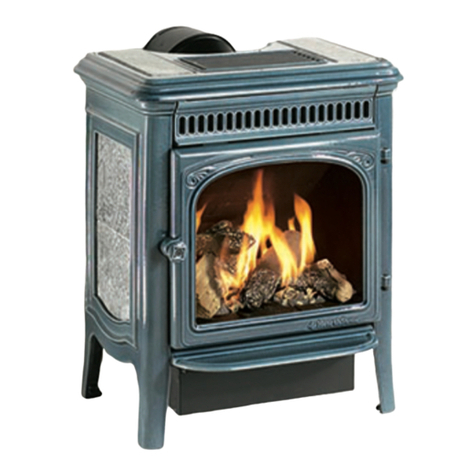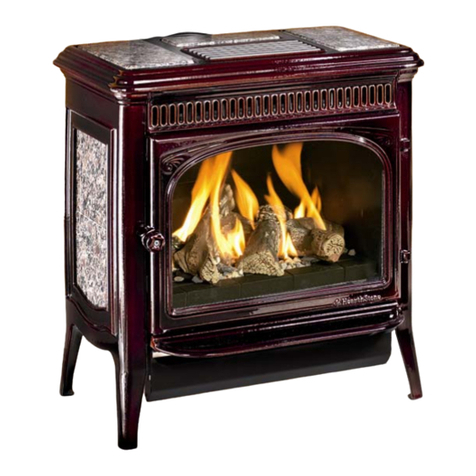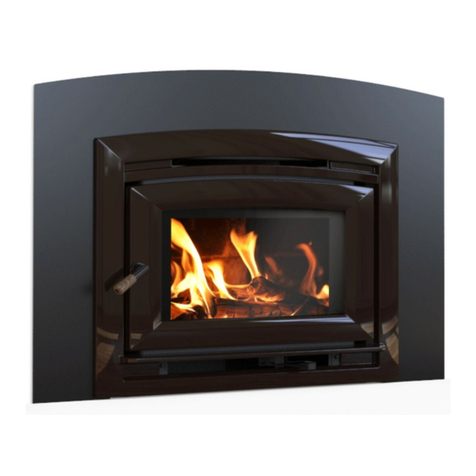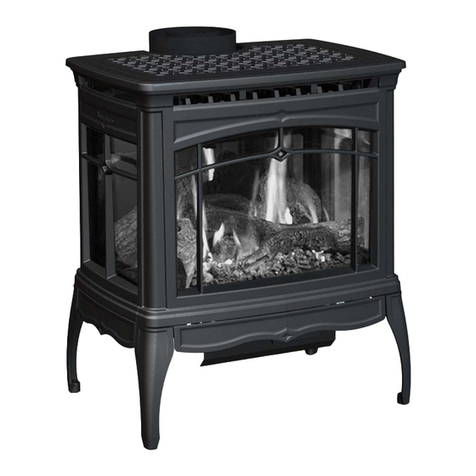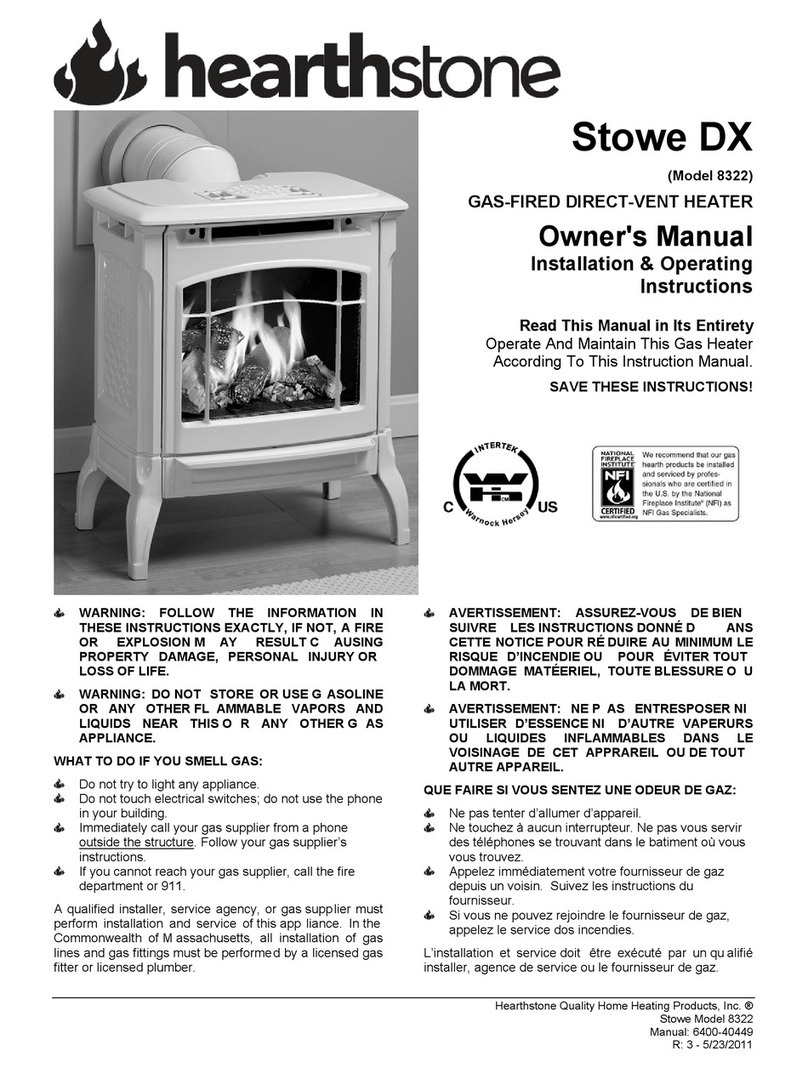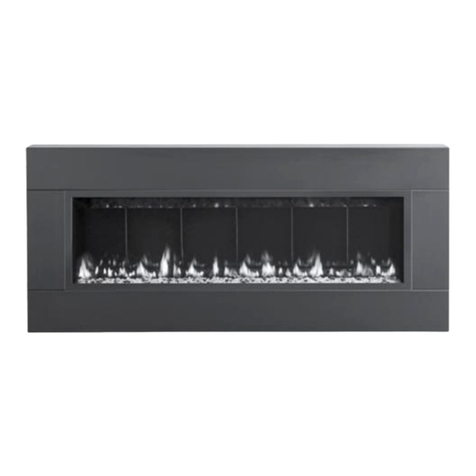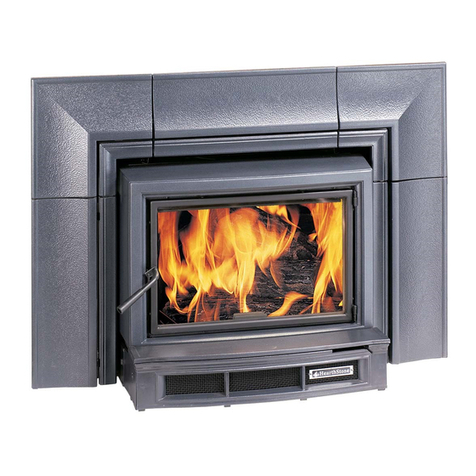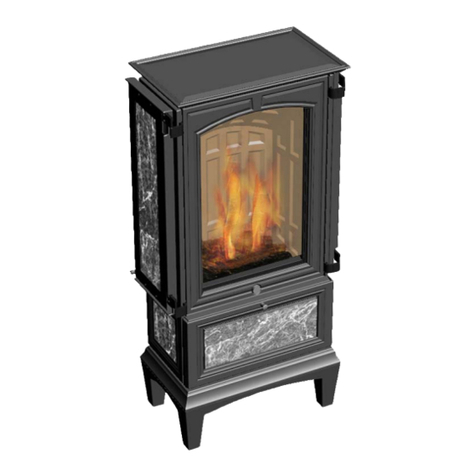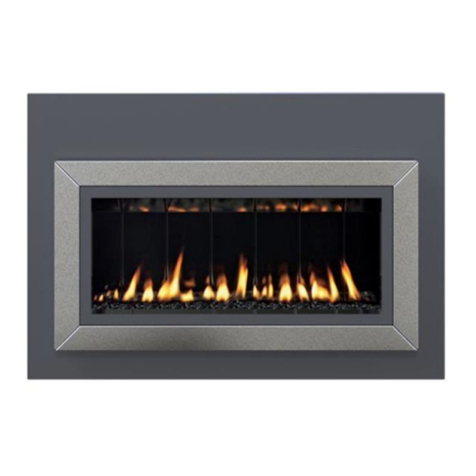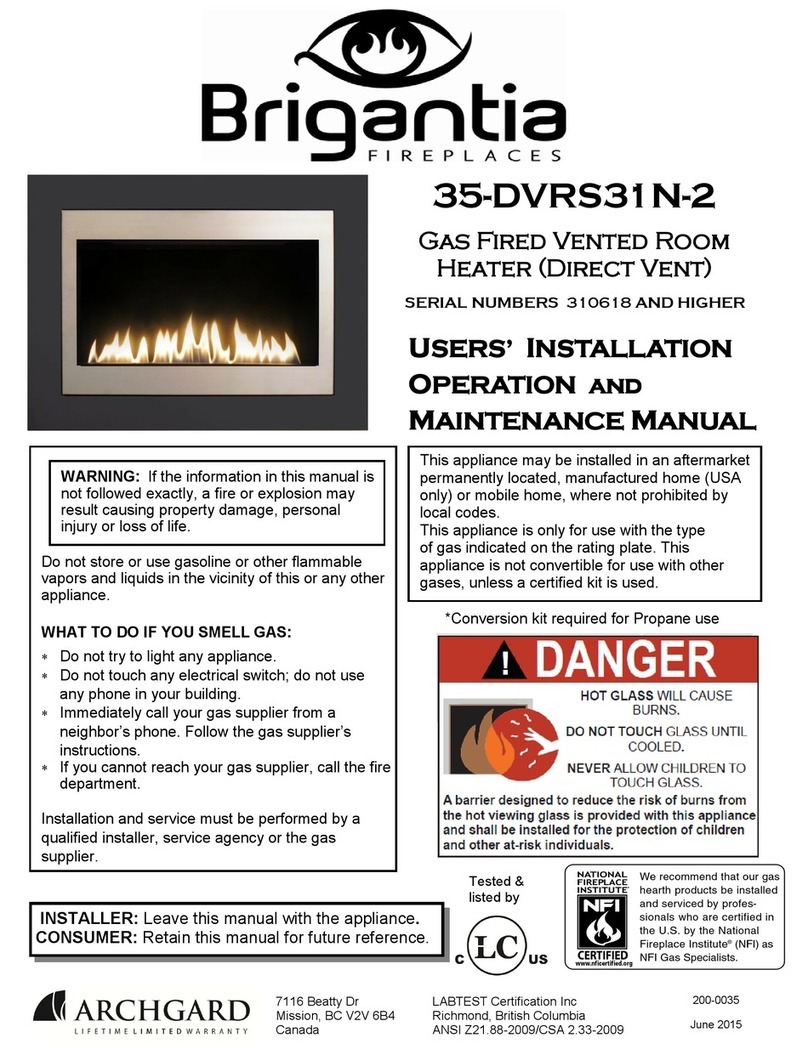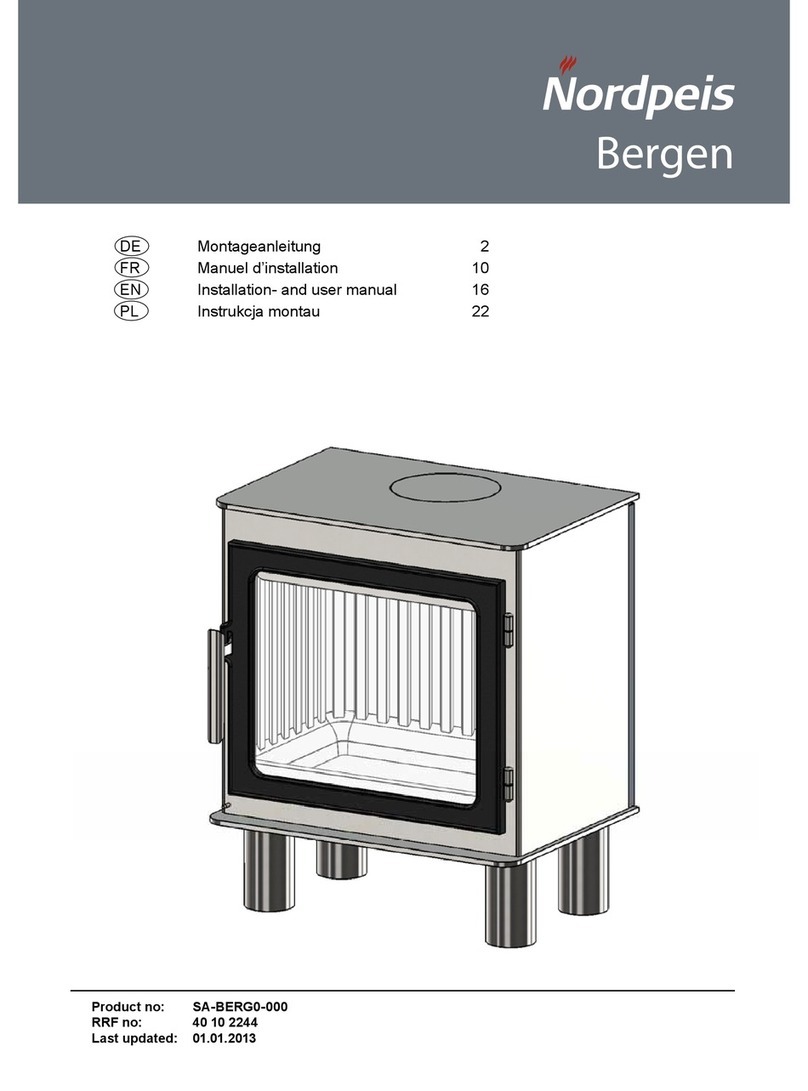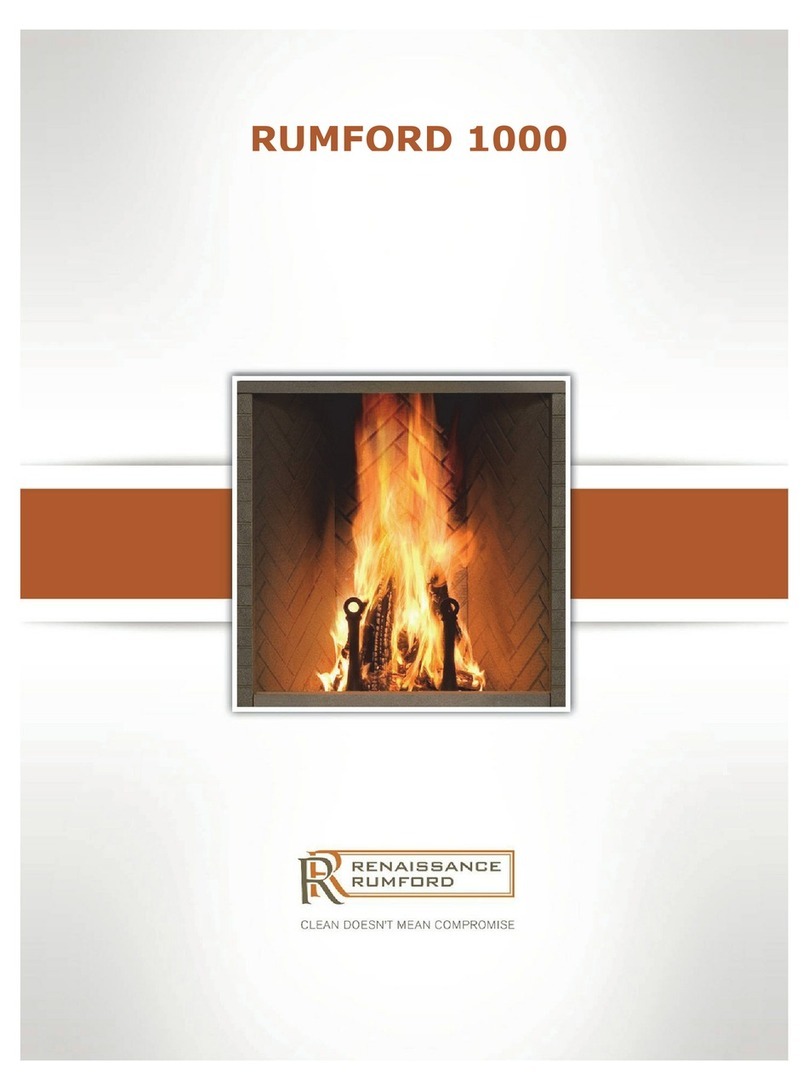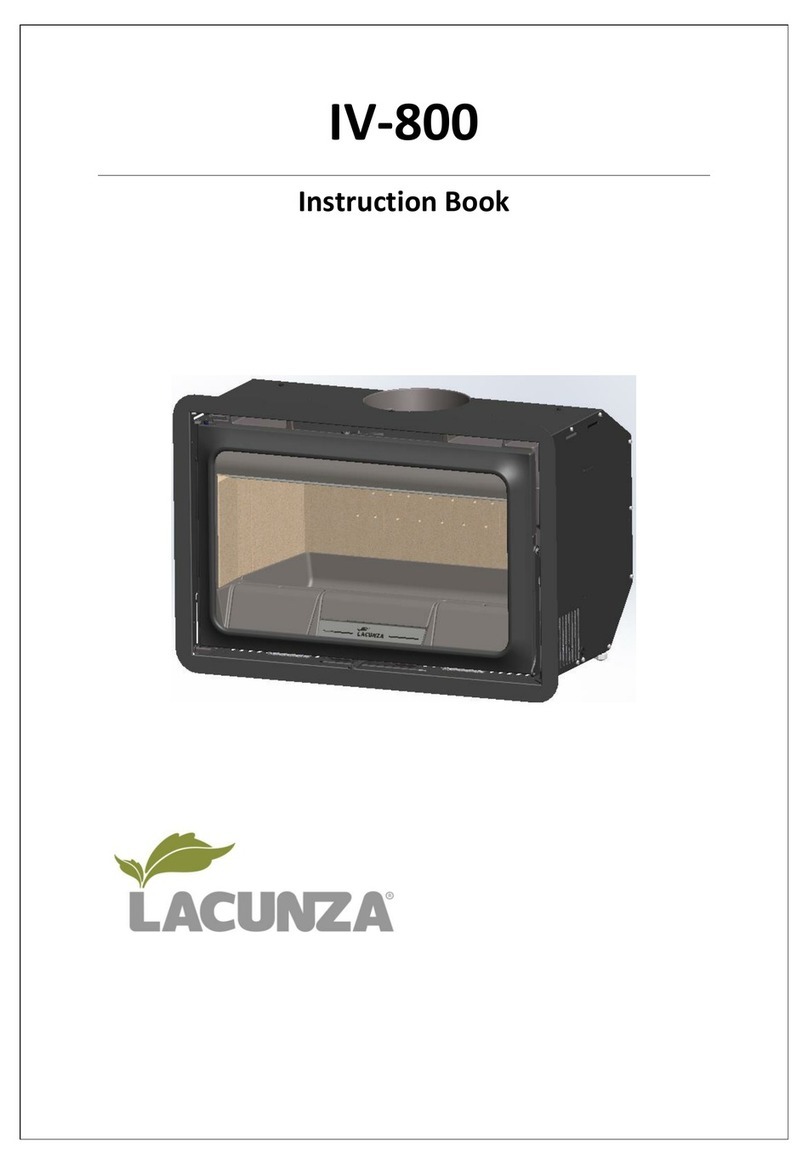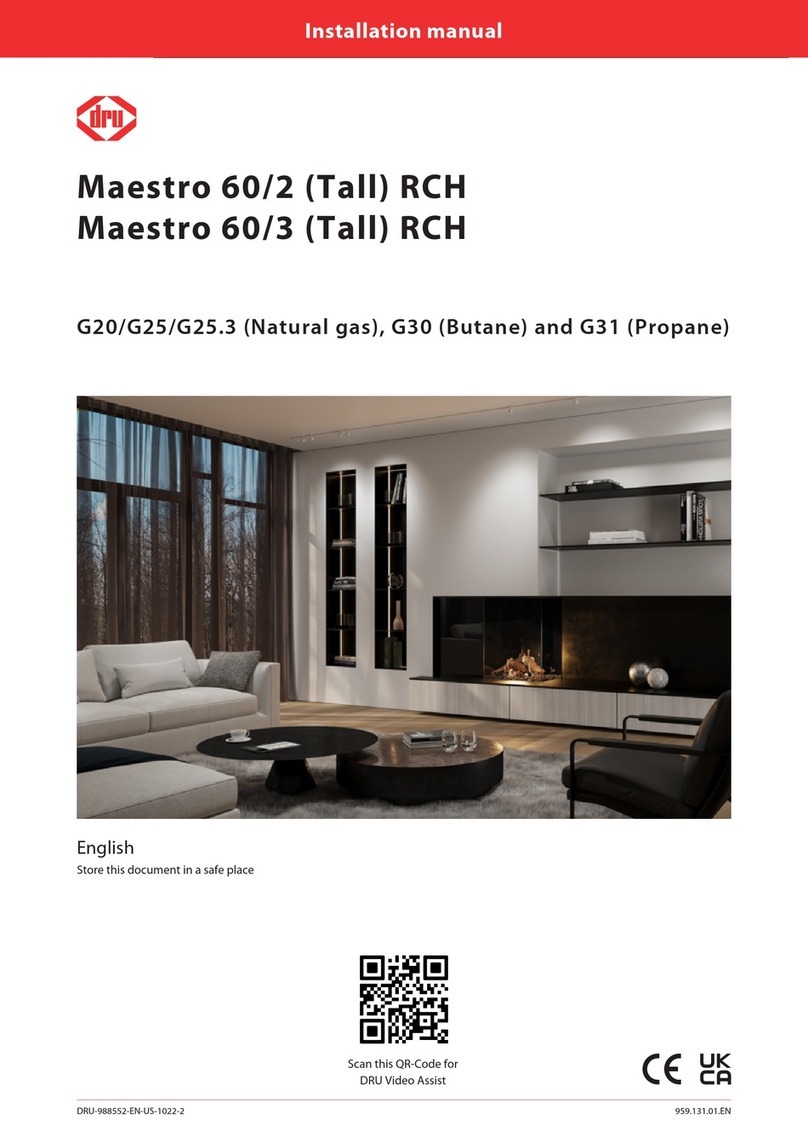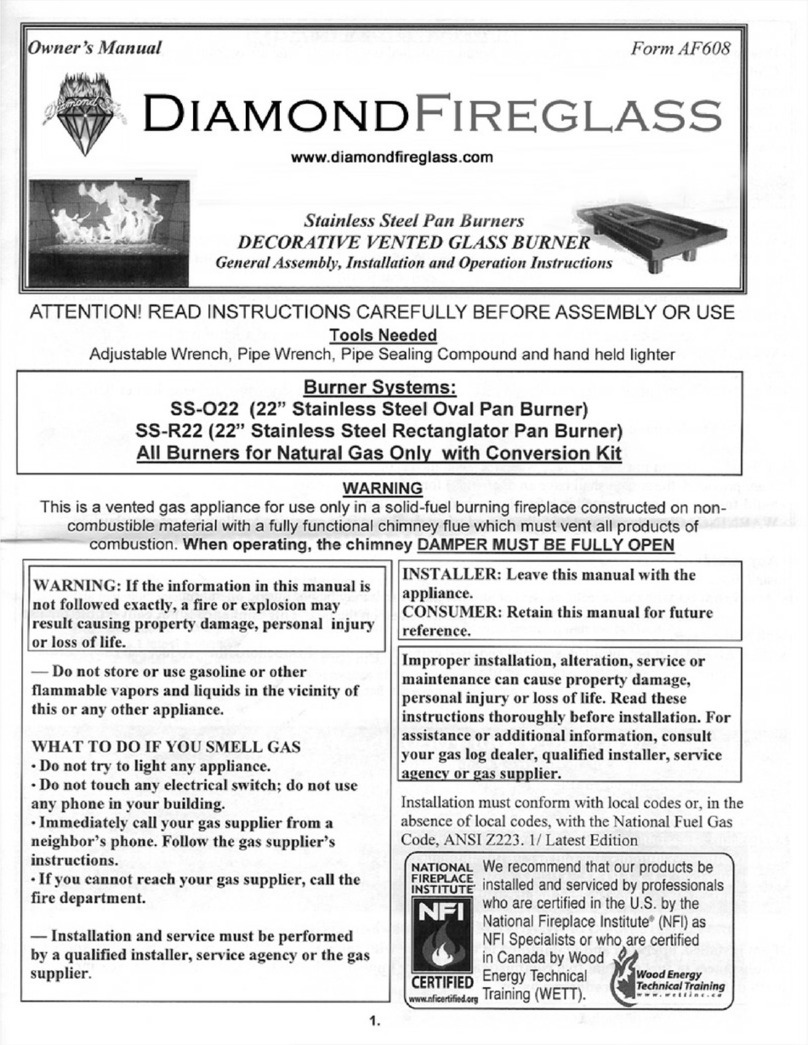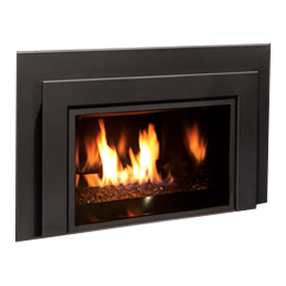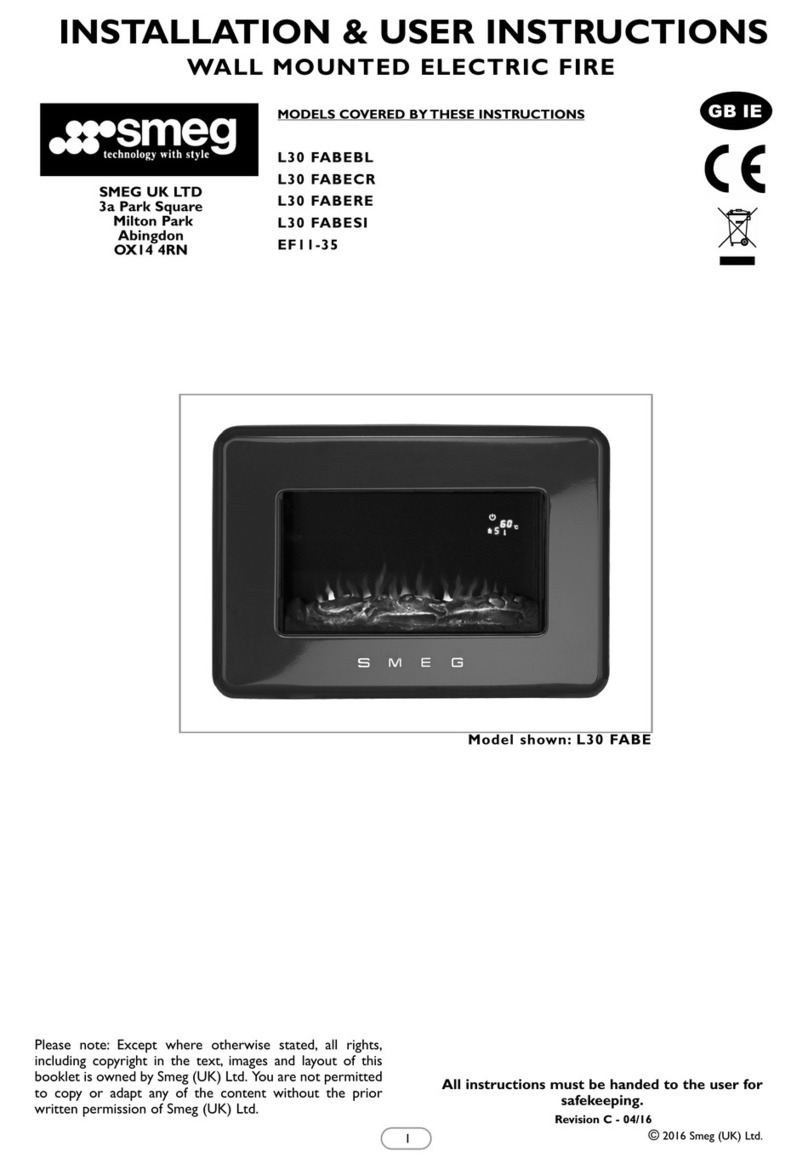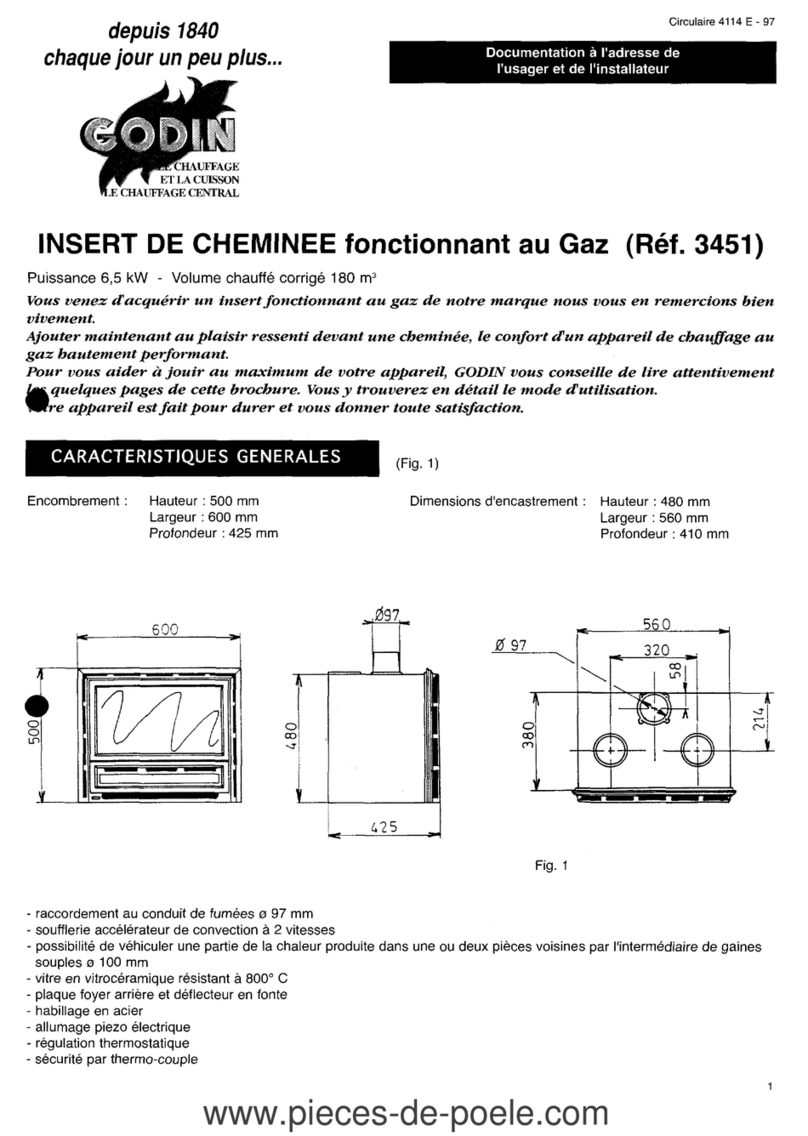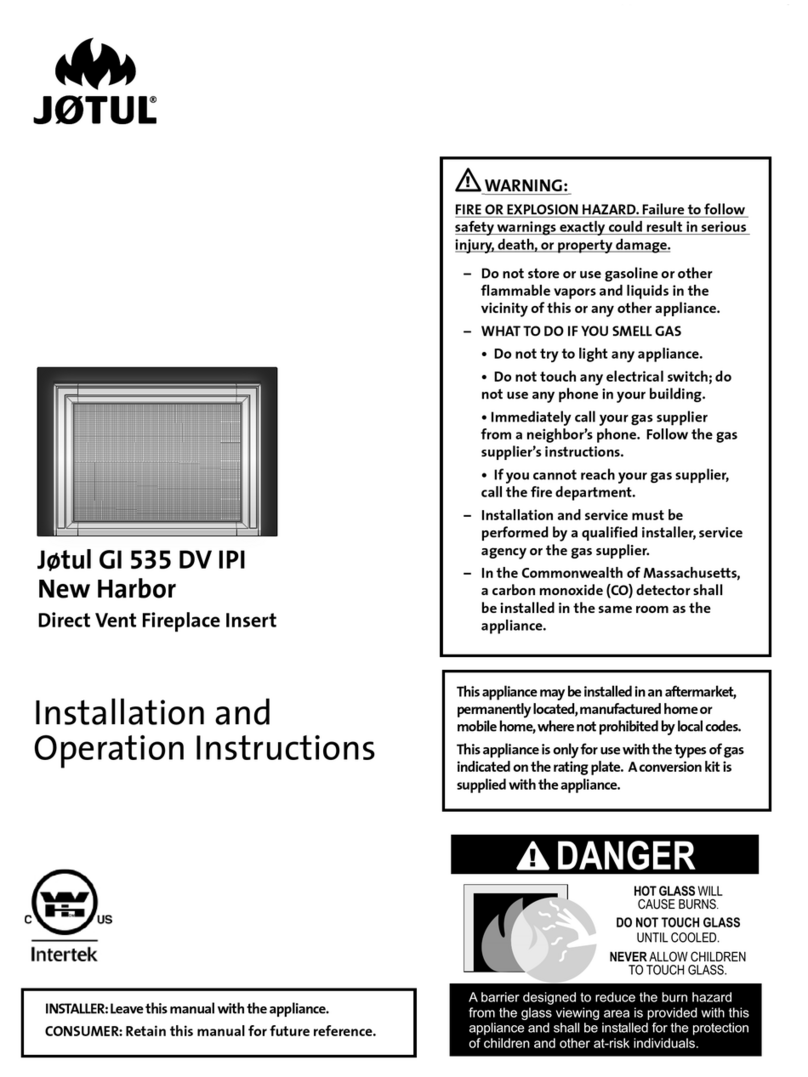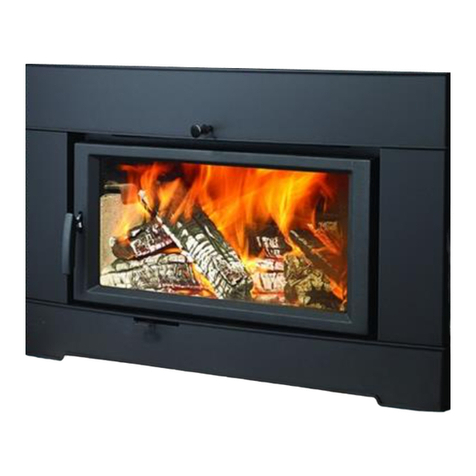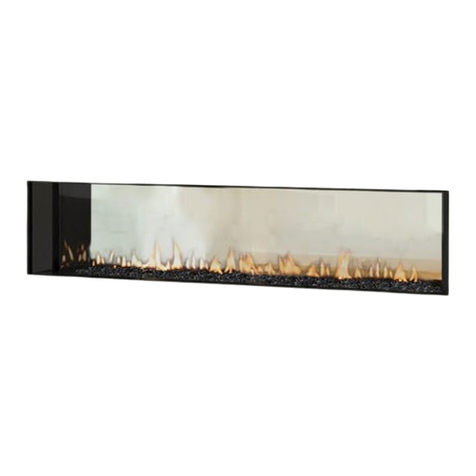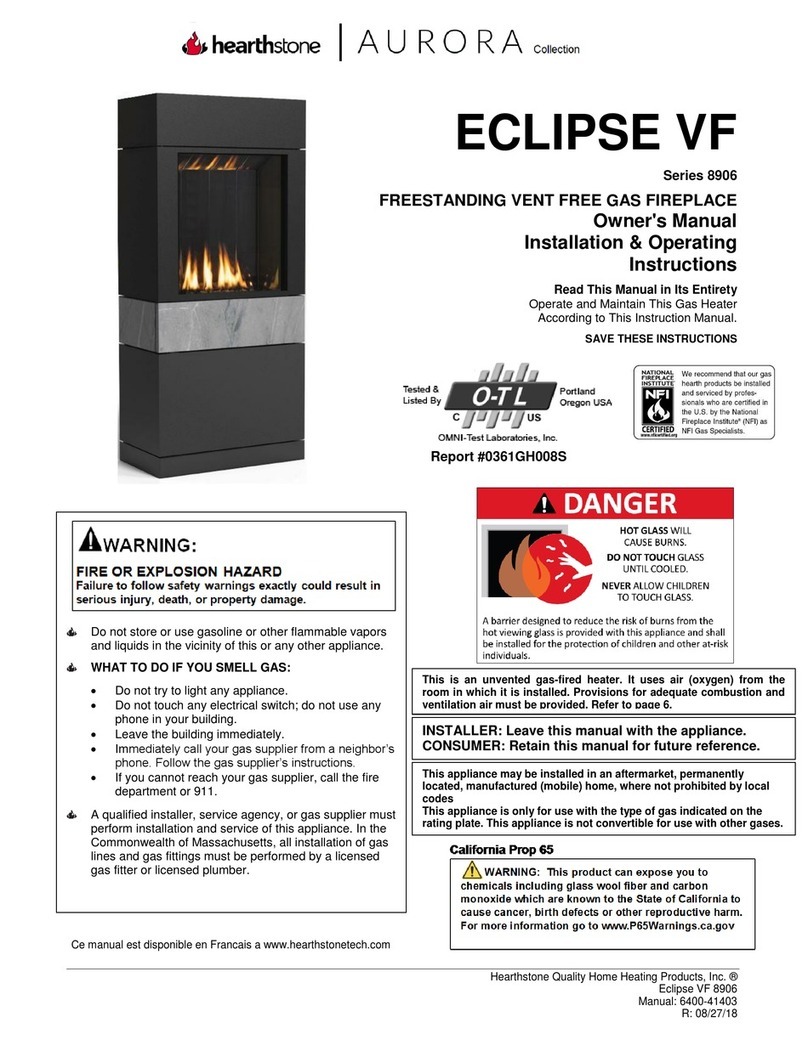
HearthStone Quality Home Heating Products, Inc. Bari Model #8180
3
TABLE OF CONTENTS
INTRODUCTION ..........................................................3
SPECIFICATIONS:........................................................4
OWNER’S INFORMATION ............................................5
INSTALLER’S INFORMATION.......................................6
ITEMS REQUIRED FOR INSTALLATION ........................6
SPECIFIED VENTING MANUFACTURER CONTACT
INFORMATION ............................................................6
UNPACKING AND INSPECTION ....................................6
INSTALLING THE BARI................................................7
INSTALLING THE STONE PANELS................................7
OPENING THE FRONT DOOR ........................................7
VENTING INFORMATION...........................................10
ELECTRICAL CONNECTIONS .....................................13
GAS SUPPLY &CONNECTIONS .................................14
FIRE LOG PLACEMENT .............................................15
LIGHTING THE UNIT FOR THE FIRST TIME ................16
INITIAL ADJUSTMENTS.............................................17
ROUTINE MAINTENANCE AND CARE........................19
PARTS LIST: .............................................................21
BOLTING YOUR BARI GAS TO A PERMANENT STRUCTURE
.................................................................................22
HIGH ALTITUDE INSTALLATIONS .............................22
TROUBLESHOOTING .................................................23
RATING LABEL.........................................................26
GAS-FIRED STOVE WARRANTY ...............................27
INTRODUCTION
Congratulations on your purchase of Hearthstone’s Bari
Gas-Fired Direct Vent heater. The Bari incorporates the
latest in balanced vent gas technology, which will provide
you with clean, efficient heat for years to come.
Combustion air comes directly from the outside of your
home to the sealed firebox system, eliminating the potential
for annoying back drafts or other problems associated with
home depressurization.
The Bari will provide you with years of practical and
convenient service. However, as with any gas appliance, the
unit must be properly and safely installed and maintained
by qualified service personnel to ensure safe and trouble-
free operation.
READ THIS OWNER’S MANUAL
Operate and maintain this gas heater according to the
instructions in this manual. For your safety, and years of
trouble free operation, read this manual in its entirety. By
following a few simple safety precautions and by
performing minimal maintenance, the unit will remain
appealing while providing years of quality performance.
WARNING: ENSURE ONLY A QUALIFIED SERVICE
TECHNICIAN INSTALLS, AND REPAIRS THIS
APPLIANCE. A QUALIFIED SERVICE TECHNICIAN
MUST INSPECT THE APPLIANCE BEFORE USE,
AND AT LEAST ANNUALLY. MORE FREQUENT
CLEANING MAY BE REQUIRED DUE TO
EXCESSIVE LINT FROM CARPETING, BEDDING
MATERIAL, PETS, ETC. IT IS IMPERATIVE THAT
THE CONTROL COMPARTMENTS, BURNERS, AND
CIRCULATING AIR PASSAGES OF THE
APPLIANCE ARE KEPT CLEAN AND FREE OF
OBSTRUCTIONS. (S’ASSURER QUE LE BRÛLEUR ET
LE COMPARTIMENT DES COMMANDES SONT
PROPRES. VOIR LES INSTRUCTIONS
D’INSTALLATION ET D’UTILISATION QUI
ACCOMPAGNENT L’APPAREIL.)
WARNING: DO NOT OPERATE THIS APPLIANCE
WITH THE GLASS, OR ANY PANEL REMOVED,
CRACKED, OR BROKEN. DO NOT SUBJECT THE
DOOR TO ABUSE, SUCH AS STRIKING OR
SLAMMING SHUT. REPLACEMENT OF THE GLASS
PANEL SHOULD BE DONE BY A LICENSED OR
QUALIFIED SERVICE PERSON.
NEVER BURN PAPER,WOOD OR OTHER
MATERIALS
This gas heater is designed to burn natural gas, or when
converted, liquid propane (LP). Never burn any fuel not
intended for use with this unit.
HOT SURFACES
Certain exposed surfaces of the Bari will reach high
temperatures during normal operation. Clearances to
combustibles must be maintained, as specified in the
“Clearances to Combustibles” section of this manual.
Do not use this appliance if any part has been under water.
Immediately call a qualified service technician to inspect the
heater and to replace any part of the control system and gas
control that has been under water. (Ne pas se servir de cet
appareil s’il a été plongé dans l’eau, complétement ou en
partie. Appeler un technicien qualifié pour inspector
l’appareil et remplacer toute partie du systéme de contrôle et
toute commande qui ont été plunges dans l’lau.)
WARNING: THIS GAS APPLIANCE MUST NOT BE
CONNECTED TO A CHIMNEY FLUE SERVING A
SEPARATE VENTED APPLIANCE. NEVER VENT
THEGAS HEATER TO OTHER ROOMS OR
BUILDINGS. MASONRY CONVERSIONS KITS ARE
AN ACCEPTABLE VENTING OPTION.
Due to high temperatures locate the appliance out of
traffic and away from furniture, draperies, clothing and



